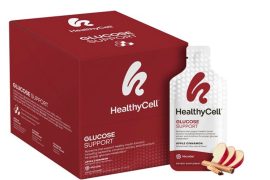The researchers in a study published in ACS’ Analytical Chemistry have demonstrated the use of a lollipop-based saliva collection system for diagnostic testing. This innovative method allows for the collection of bacteria from adults and remains stable for up to a year. The participants in the study preferred the lollipop candies over traditional collection methods.
Traditionally, throat swabs have been used for collecting samples to diagnose various illnesses, including strep throat. However, saliva sampling has gained popularity as a less invasive alternative. Technicians can analyze a patient’s saliva using techniques like quantitative polymerase chain reaction (qPCR). Saliva sampling is particularly useful for at-home testing and was widely used during the COVID-19 pandemic.
To make the process of saliva collection more enjoyable, researchers developed a lollipop collection device called CandyCollect. The CandyCollect lollipop has a spoon-like stick with a spiral-shaped groove carved into the top. The flattened end is covered with isomalt candy, which allows saliva to flow easily into the groove as the lollipop is consumed. In a previous lab study, the researchers demonstrated that CandyCollect could capture bacteria responsible for strep throat.
In the recent study, the researchers compared CandyCollect with two commercially available at-home saliva sampling kits. They sent these devices to 28 adult volunteers who used them and then returned them to the lab. The researchers analyzed the samples and quantified the presence of Streptococcus mutans and Staphylococcus aureus bacteria using qPCR.
The results showed that CandyCollect detected the target bacteria in all cases where one or both of the conventional methods also detected them. Additionally, the participants found the lollipop candies to be the most popular method among the three. They also rated it as the “most sanitary” and “least disgusting.”
This lollipop-based saliva collection system offers a more enjoyable and less intrusive way of collecting diagnostic samples. It could potentially be used for various diagnostic procedures, providing an alternative to traditional methods of sample collection.
Disclaimer:
The information contained in this article is for educational and informational purposes only and is not intended as a health advice. We would ask you to consult a qualified professional or medical expert to gain additional knowledge before you choose to consume any product or perform any exercise.







